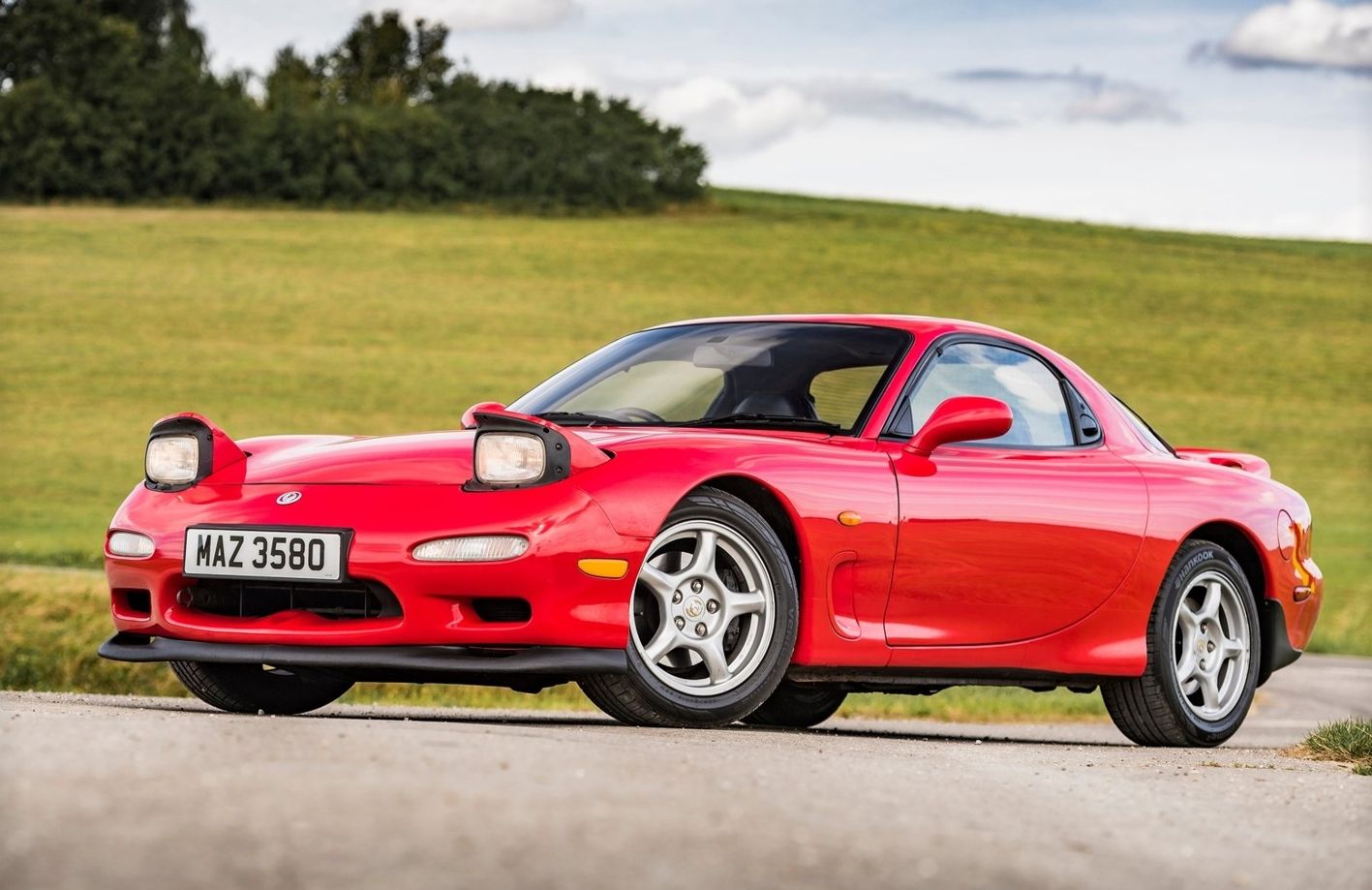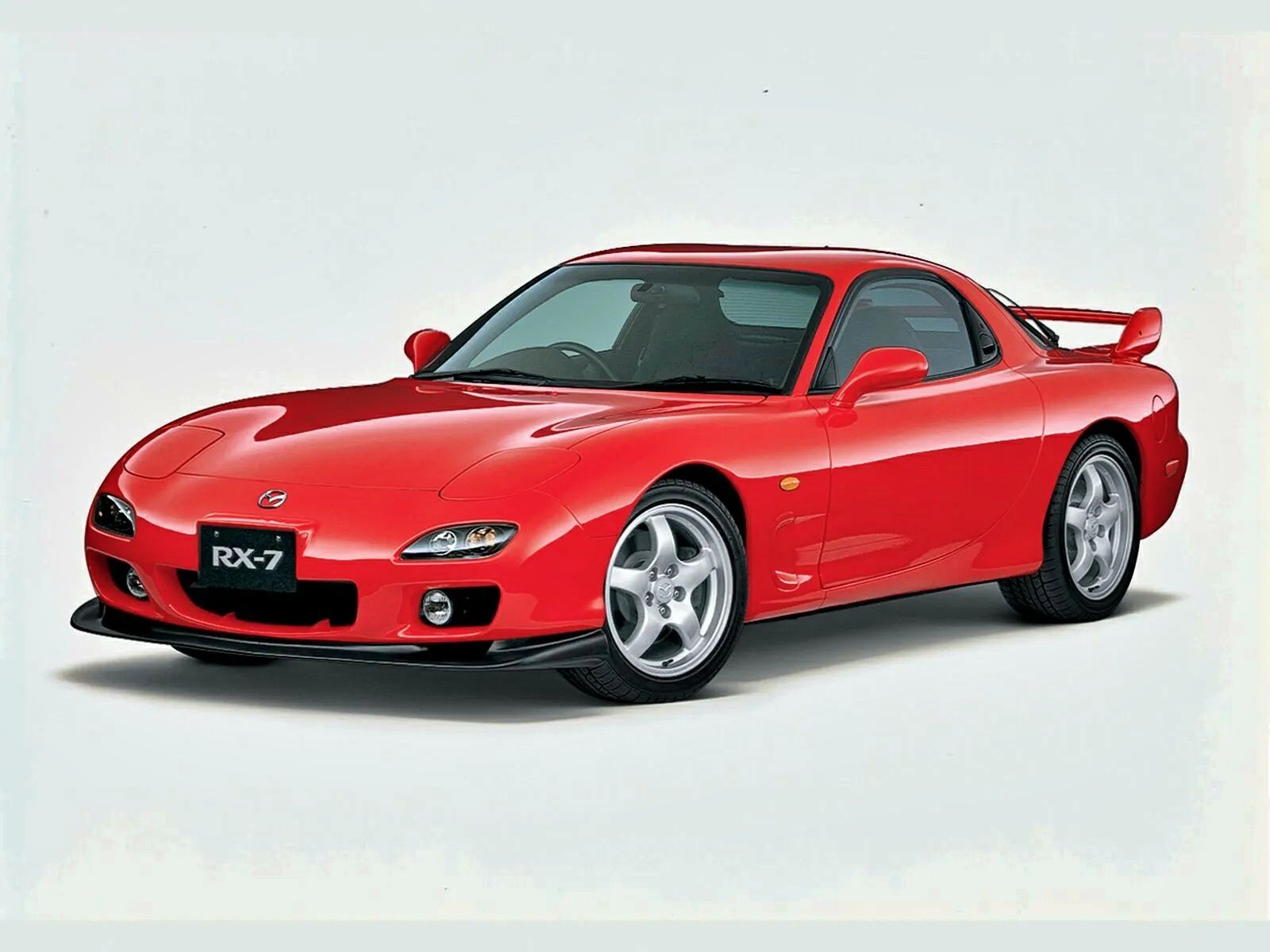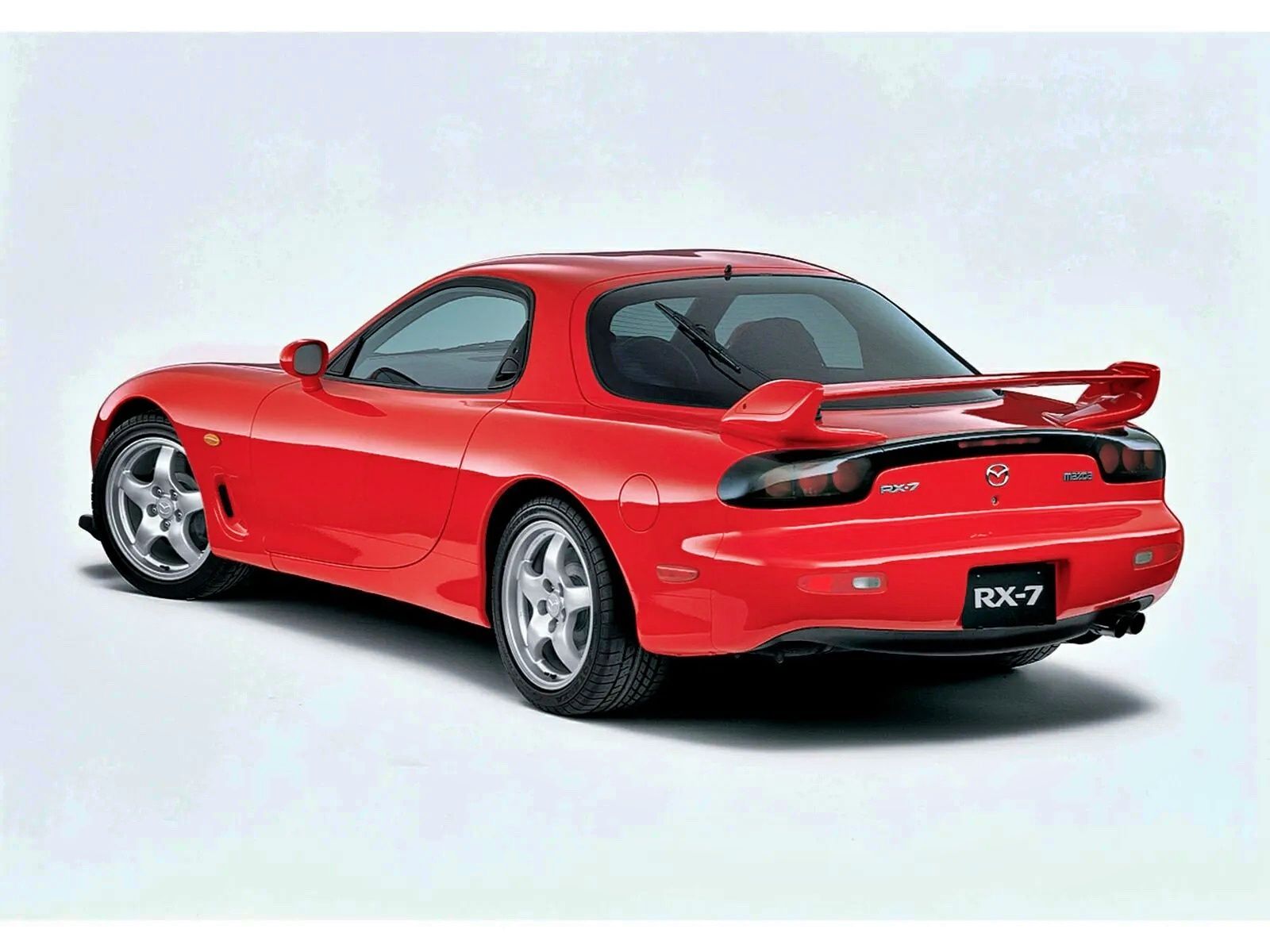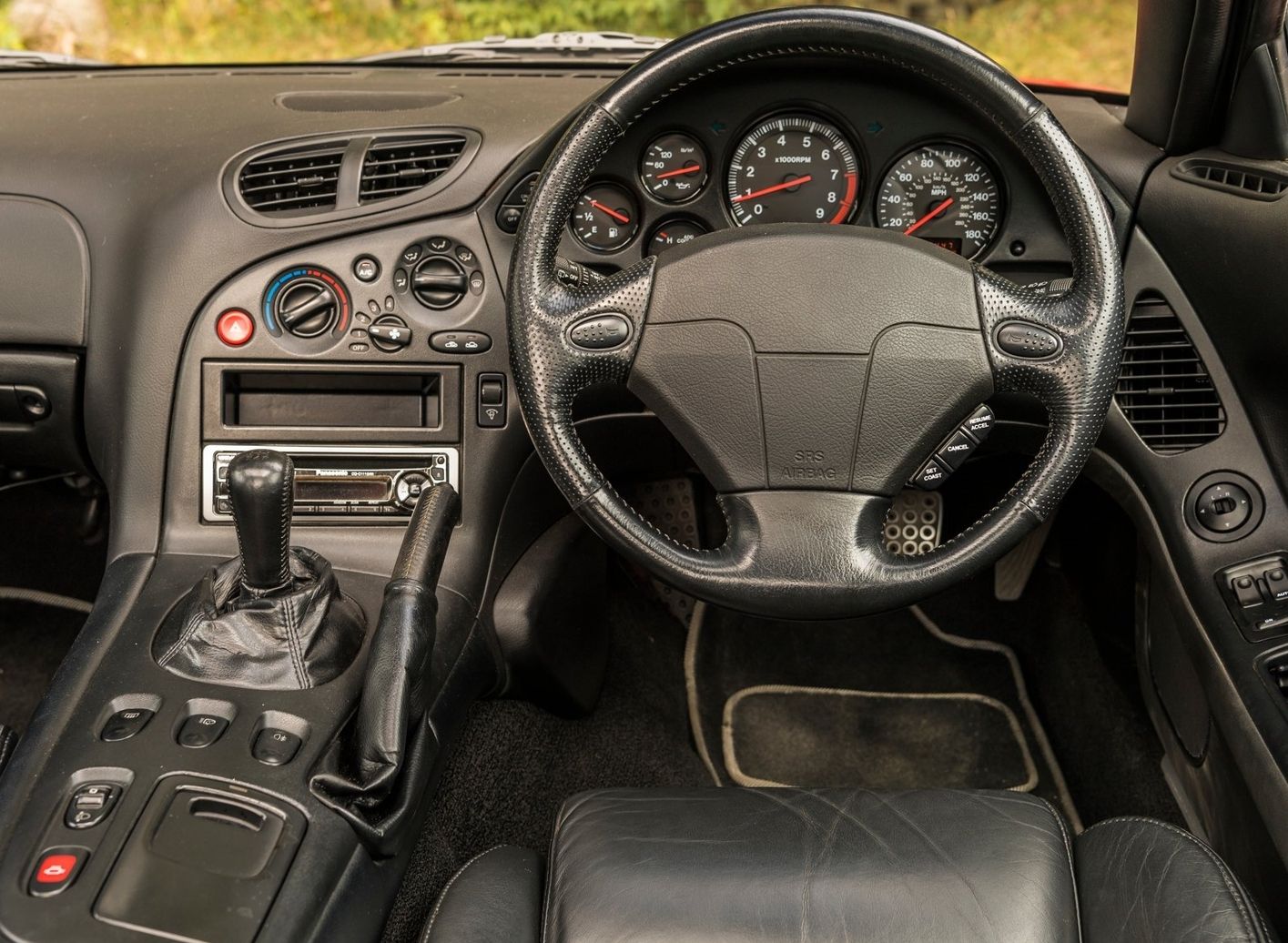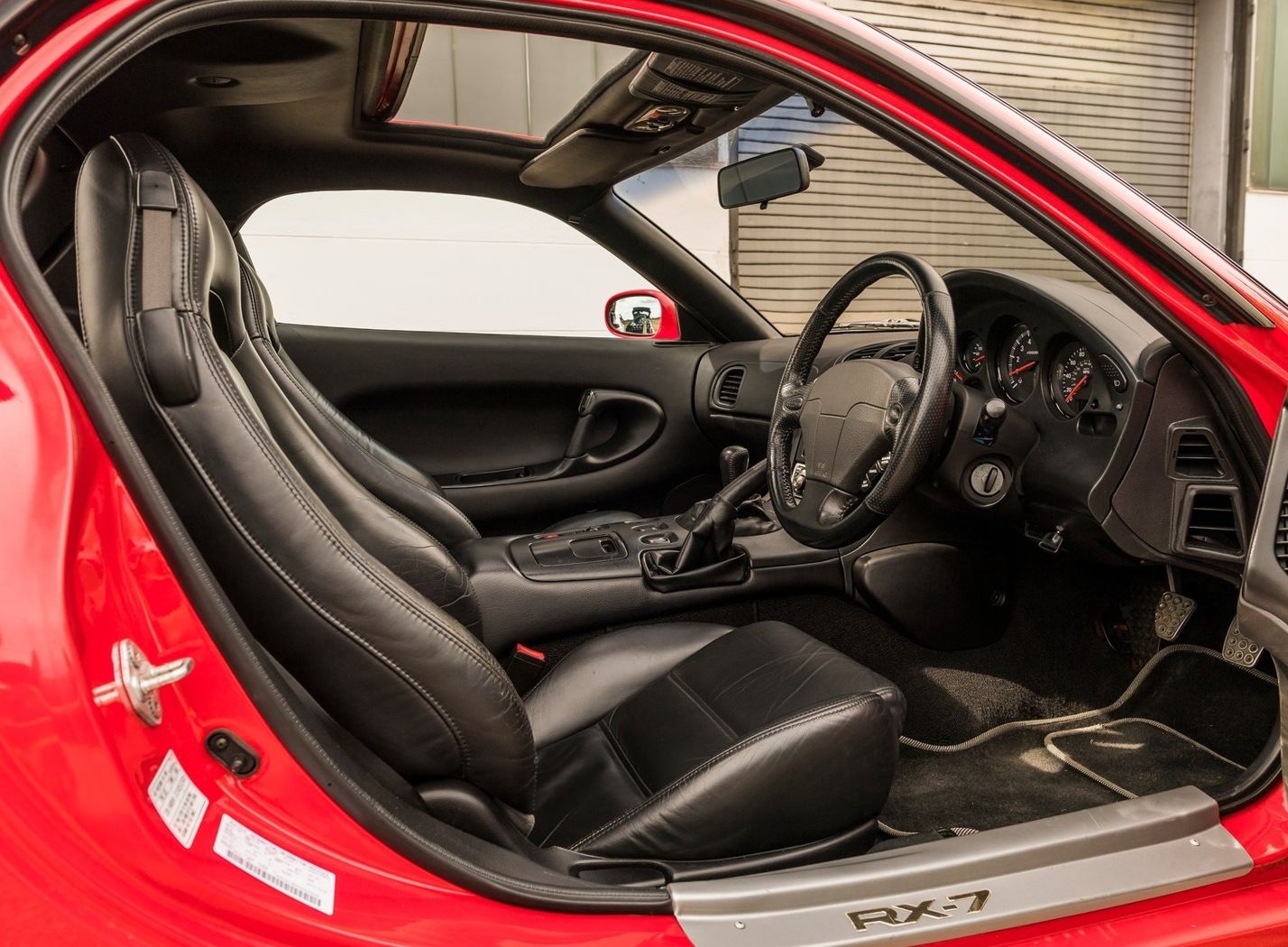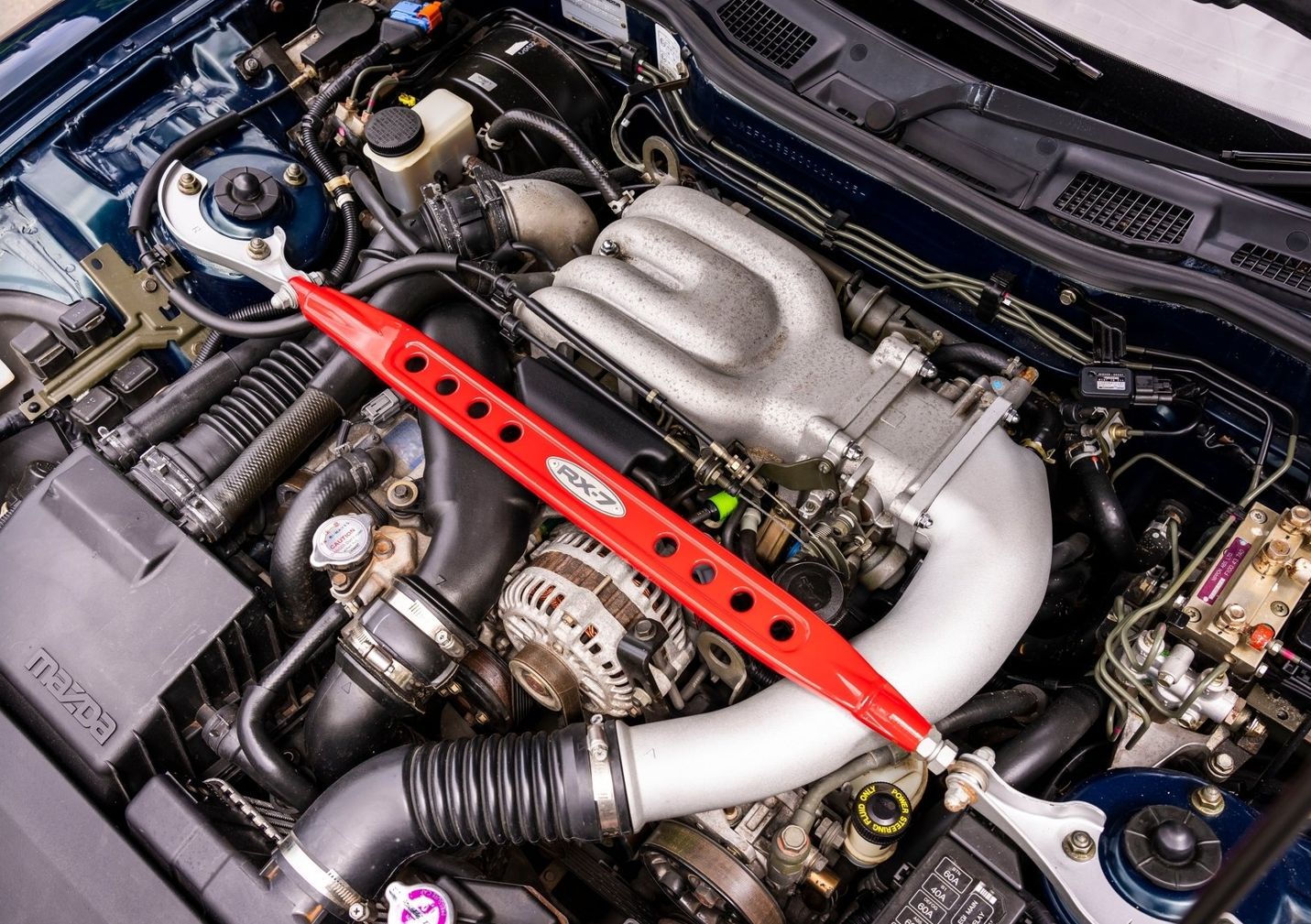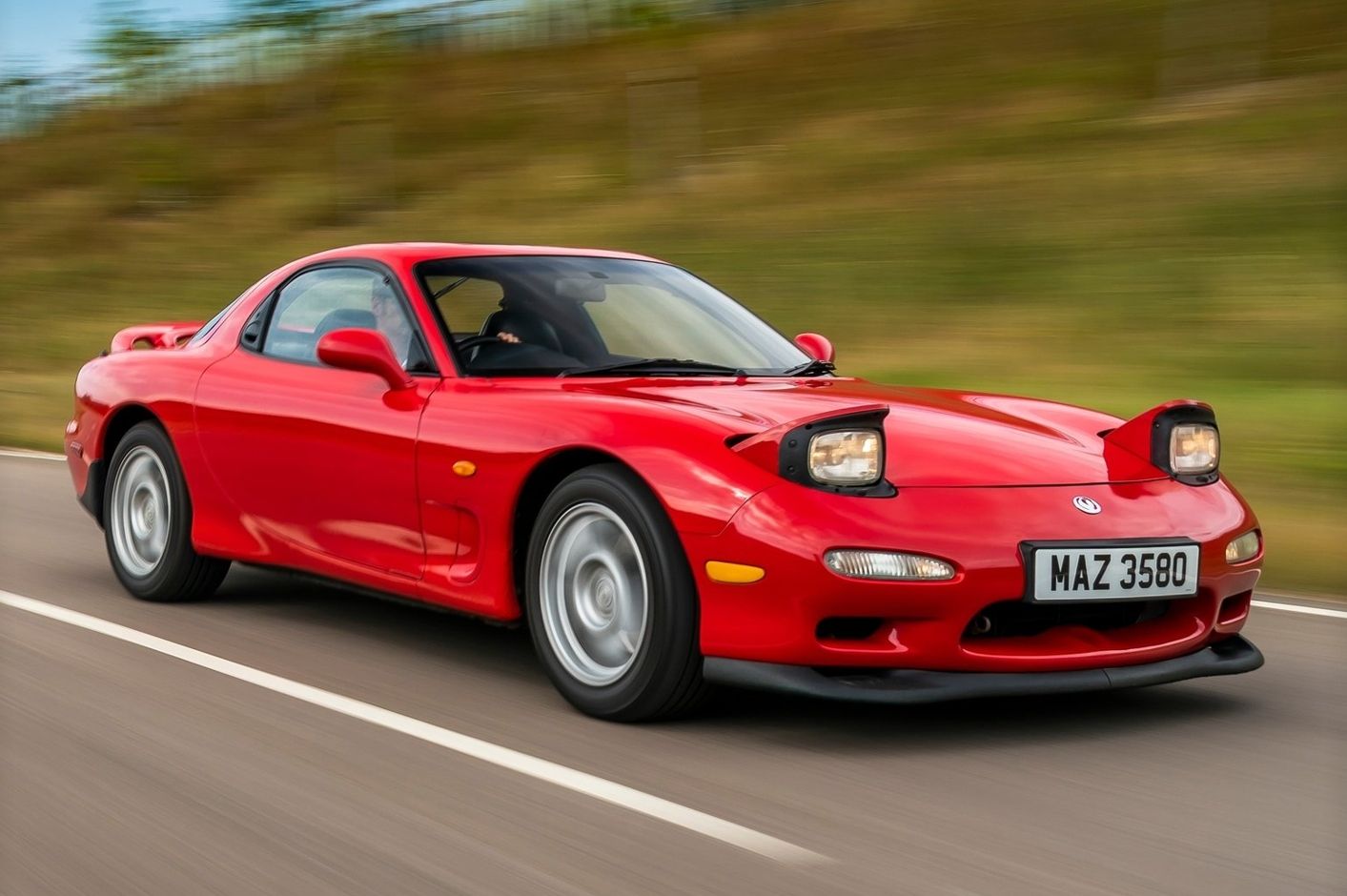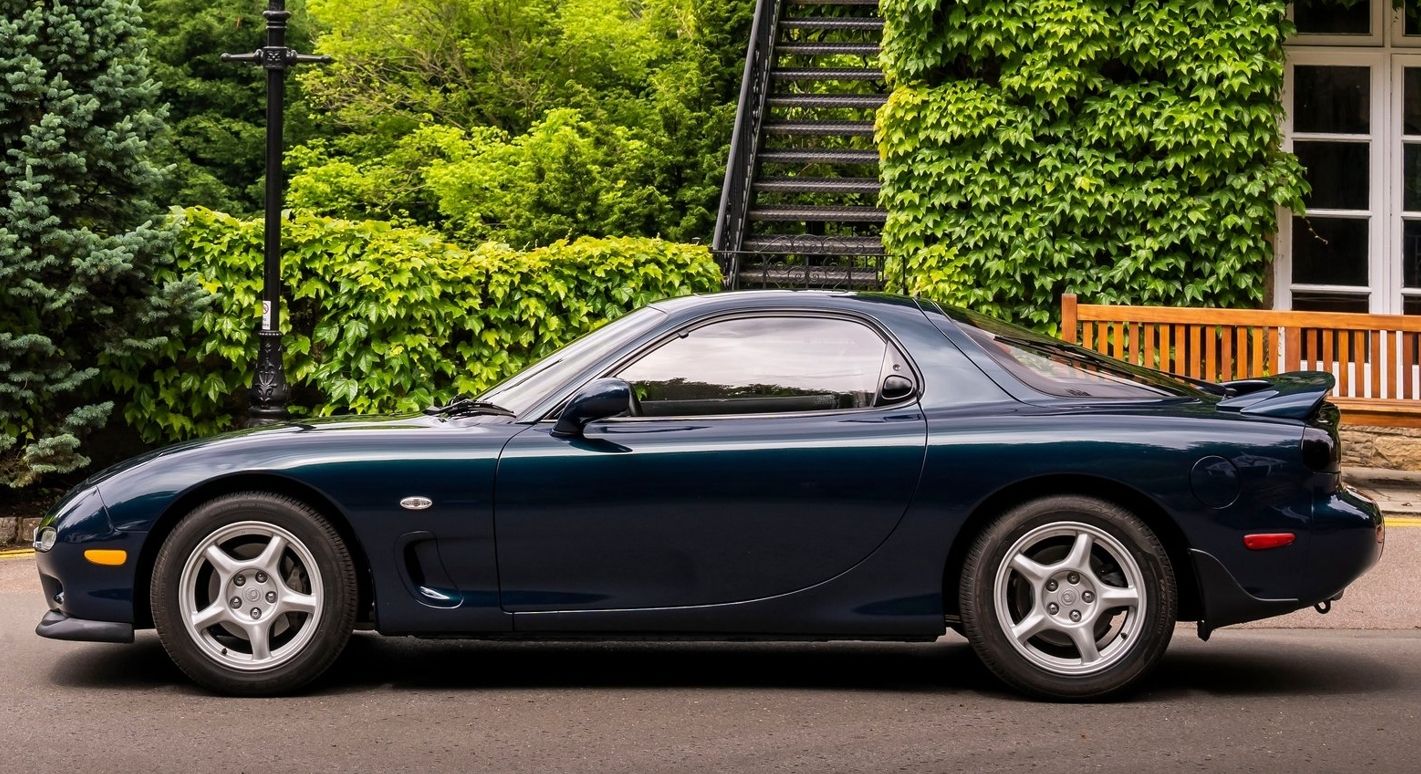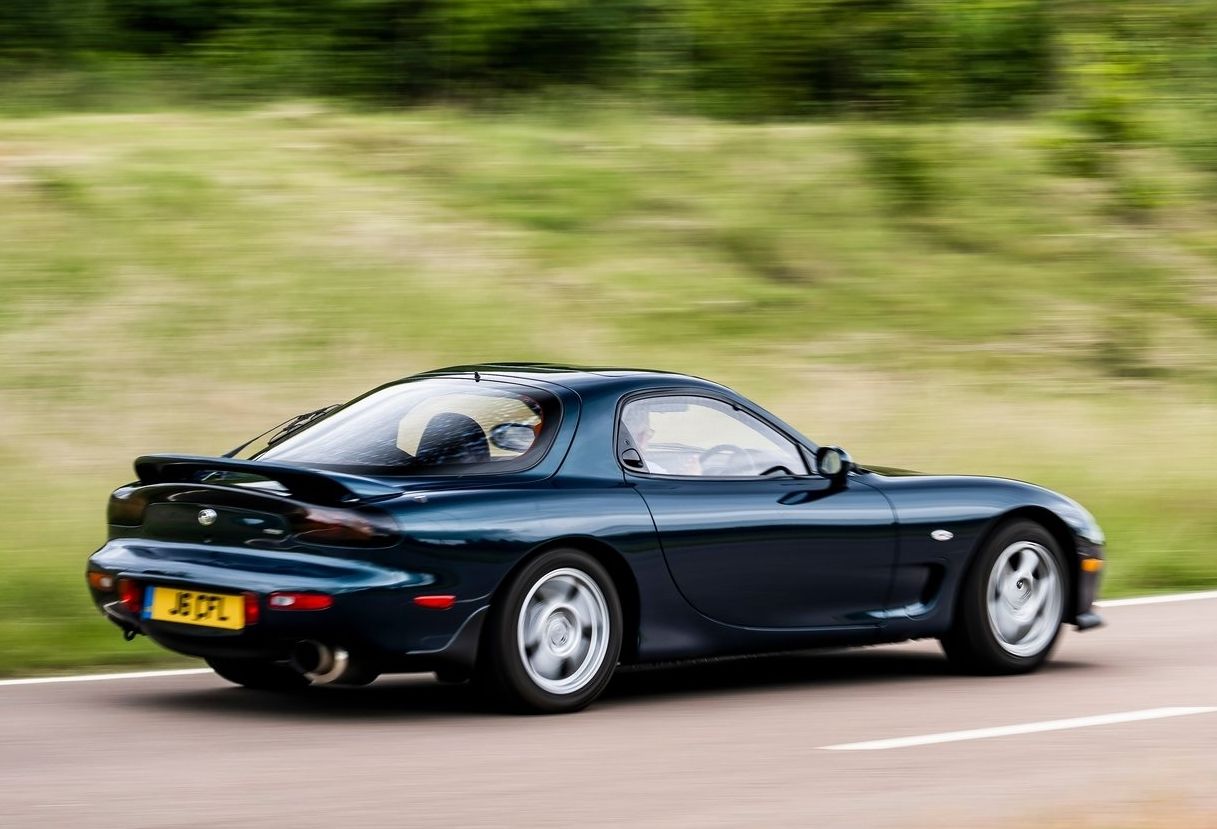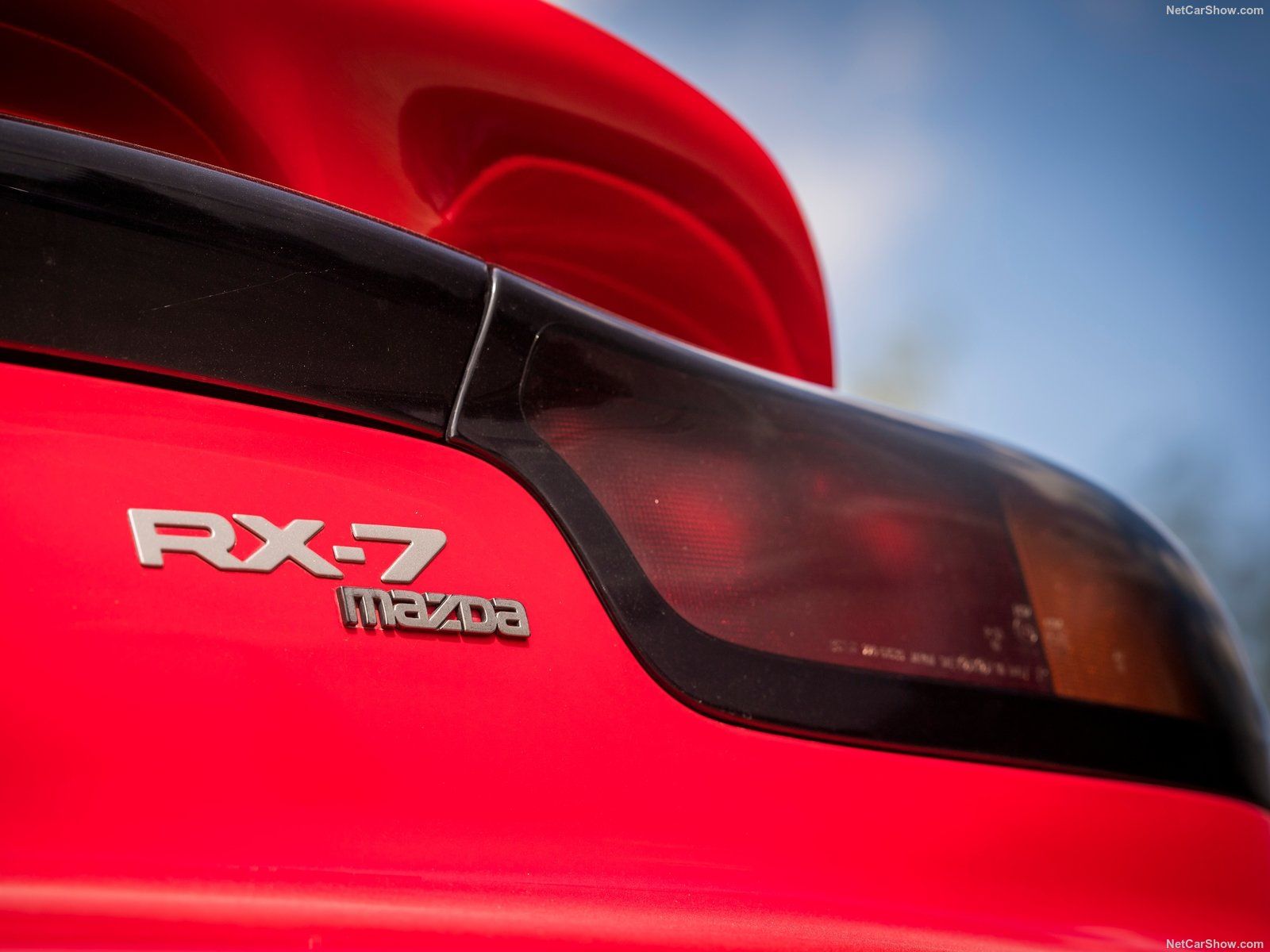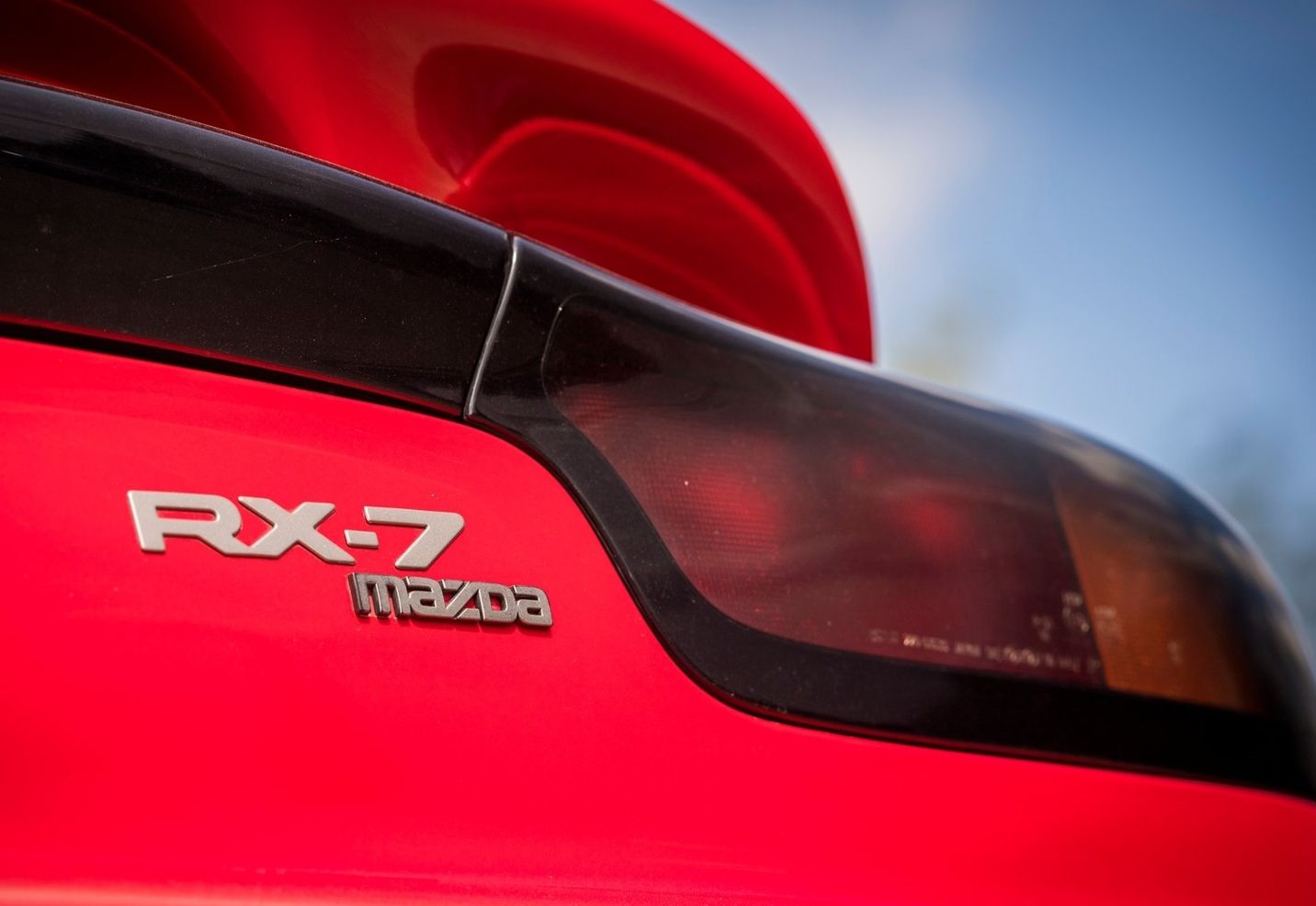As far as Japanese sports car icons go, few vehicles hold the prestige of the FD-generation Mazda RX-7. It found consensus acclaim among enthusiasts when it made it to U.S. shores in 1993. Despite its appeal, it didn't sell very well compared to its little brother, the Mazda Miata. Its short lifespan of three years and low production numbers make it an elusive vehicle to find.
Now, 30 years after its original release, the FD RX-7 is rarer and more desirable than ever. The charm of the rotary-power sports coupe has made it a consensus fan favorite. As a result, prices continue to skyrocket for these quirky coupes. Let's dig a little deeper to find out why the FD RX-7 isn't just nostalgia hype and perhaps one of the best sports cars that Mazda has ever made.
Mazda RX7
- Model: Mazda RX-7 FD
- Engine: 1.3-liter twin-turbo rotor
- Power Output: 255 HP
- Torque: 217 LB-FT
- Transmission: 6-speed manual / 4-speed auto
- Driveline: Rear-wheel Drive
- Enjoys a cult status amongst enthusiasts
- Iconic 90s JDM styling
- Offers tremendous performance at an affordable price
- High-oil Consumption
- Working on the Rotary Engine can be tricky
- Rebuilds won't come cheap
Mazda RX-7 (FD) Performance And Capability
The third generation FD RX-7 is part of the "Holy Trinity" or "Big Three" of the 90s JDM tuner sports cars. Along with the R34 Nissan GT-R and MKIV Toyota Supra, the FD holds its spot among the best Japanese sports cars. Yet, Toyota makes the Supra models to this day and Nissan only discontinued the GT-R on the R35, this year. We never saw a successor to the FD generation RX-7. Even sadder is that haven't seen a new RX-7 model in 27 years.
So in a way, the FD is the rarest and most desirable of the Big Three. Even with the R34 still not legal for import into the U.S., we still have more exposure to the GT-R platform than the RX-7. What makes this Mazda the brand's standout sports car? It made sure to separate itself from the competition. Yet, its biggest strength would also lead it to its early demise.
The FD was the last car for sale in the U.S. to have a rotary engine. The sequential twin-turbo 13B-REW was revolutionary for its time. The 13B is the most widely produced rotary engine ever. While the REW variant would be the first ever mass-produced sequential turbocharging system. On paper, the FD RX-7 was the slowest of the Big Three. The 13B had a comparative shoebox engine size and mini-displacement next to the Toyota 2JZ inline-six turbo.
The 1.3-liter put out 255 horsepower at 6,500 RPM, but it definitely made more than advertised. Torque was also low at only 217 pound-feet at 5,000 RPM but still was enough to use low RPMs around town. While the 8,000 RPM rev-limit is dizzying, there is little reason to go up there with the stock engine. It may not be the best-sounding engine of all time in stock form, but it is characteristic. How many cars can shoot fireballs out of the exhaust without modification?
Even then, Mazda held a reserved stance when tuning the boosted twin-rotor engine. They knew they were going to have to compensate for its novelty with a semblance of reliability. Thus, its stock boost was at most 10 psi, only dropping to an eight psi peak during the switch-over of the turbos.
Yet, even though it may have the least power on paper, many agree the FD is still the best to drive. Mazda didn't want power output to be the main selling point of the car. Instead, it was about the driving experience as a whole. On an original brochure, Mazda states,
"Why would driving a sports car feel like operating a machine when it can feel like moving a muscle?"
Mazda's development chief Takaharu Kobayakawa said the FD was about "emotional fulfillment." To understand the FD, we need to read deeper between the lines. It is the lightest RX-7 model among the three generations. It is also the lightest of the Big Three, with average curb weights of around 2,900 pounds depending on options.
With 200 pounds shaved from the FC generation, the FD is a simple, yet effective package. A no-nonsense purpose-driven vehicle, with no gimmicks or gadgets. Double-wishbone suspension graces the front of the FD making it sharp and communicative offering a lovely balance. You always feel in control and on the edge, the FD is happy to let you know its limits.
As a complete driver's car, there isn't an aspect of performance, that the FD lacks. Four-piston brakes in the front quell acceleration in immediate fashion. Depending on trim, owners could find stiffer or more comfortable suspension options. The ultra-rare R1/R2 trims added upgraded springs and shocks. While the Touring model shifted the FD's focus back to its grand touring roots.
Regardless of option or trim, the FD RX-7 stands out in its ease of use and functionality. You hop in, and the FD encourages you to rev it out and stretch its very capable legs. You can tell you are in a special car from the moment you turn it on. A livable sports coupe with few compromises. While we find it unlikely to be a daily driver for most, it is more than capable to be. This is for all intents and purposes the grown-up Mazda Miata. It keeps all the things that make the Miata great, but it is more refined and specialized. That added luxury, capability, and styling though, comes at a cost.
| Engine | 13B-REW twin-turbo twin-rotor 1.3-liter |
| Horsepower | 255 @ 6,500 RPM |
| Torque | 217 @ 5,000 RPM |
| Transmission | 6-speed manual transmission |
| 4-speed automatic transmission | |
| Drive Layout | Rear-wheel drive |
| 0-60 MPH | 5.6 seconds |
Exterior Design
The FD RX-7 remains one of the most cherished body designs to ever come out of Japan. The shape is simple, yet so fulfilling. This is a testament to the perfect blend of function and form found in Japanese culture and design. Think of it like a piece of sushi. So simple, yet so delicious.
The FD is the definition of refinement within the RX model line-up. An inch and a half shorter than the outgoing FC, but 2.5 inches wider. All while being 200 pounds lighter. Mazda went to great lengths to reduce the weight of the FD as much as possible.
The hood features aluminum and the exhaust is a single pipe and muffler for weight savings. The venting on the front bumper was more efficient, allowing for a smaller radiator. The standard 16-inch 5-spoke wheels were light units as well. Performance optimization was at every consideration of exterior design.
Yet, they managed to make the car still so beautiful. Its small and athletic dimensions give it undeniable allure. You can assume that any car below a 50-inch roof height is bound to look good. Why? Because you can tell from the height alone it's a purpose-driven car and the FD RX-7 at 48.4 inches is no exception.
Pop-up headlights are still fun and won't ever get old. With them recessed, we can appreciate the streamlined body of the FD. The long strip of smoked taillights is a design element we still love. To say the FD RX-7 has aged well is an understatement.
The added front lip and the rear spoiler are options available on all trims. The aero package came standard on the rare R1/R1 trims. Regardless of trim or model, it is the silhouette of the FD that makes it shine. We still think this is the best-looking car, of the Big Three and one of the best-looking sports cars ever.
| Standard Colors | Competition Yellow Mica |
| Vintage Red | |
| Brilliant Black | |
| Silverstone Metallic | |
| Montego Blue Metallic | |
| Chaste White | |
| Pearlie White |
| Length | 168.5 in |
| Width | 68.9 in |
| Height | 48.4 in |
| Wheelbase | 95.5 in |
| Track Width | 57.5 in (front) / 57.5 in (rear) |
| Cargo Space | 6.0 cu-ft |
Interior Design
Space is a limited luxury in the FD RX-7. There are no rear seats in the U.S. model. Whereas the JDM model did come in a 2+2 configuration, you couldn't even fit a toddler back there. After all, this is a sports car. It places capability before comfort. It wants you to drive it, and drive it hard. Everything after that is an afterthought.
The interior came standard with cloth seats and a tape player (yes, a tape player). Cruise control and leather were options that came standard on the Touring trim, which also added a sunroof, a rear wiper, fog lights, and a Bose stereo system (which took away critical storage space). For the final two model years, the PEP (Popular Equipment Package) was an option as well.
The bolstered seats although tight, are inviting. The perforated steering is well-weighted and thick. Every button and control faces the driver. But, for some reason, every A/C vent is a different shape and size and laid out in a sporadic fashion throughout the cabin. The metal pedals including the dead pedal are a welcome feature to optimize feel. Five analog gauges grace the instrument cluster in a simple and clean fashion.
We have to emphasize that the FD RX-7 is a small car in its dimensions. Just like a Mazda Miata, you need to make some considerations about what you are driving it for. Canyon cruise on Sunday? Amazing. Night on the town with the spouse? No problem. Road trip with friends? They better have their own cars (better yet, drive you instead)!
Mazda RX-7 (FD) Coupe Price, Availability, and Ownership
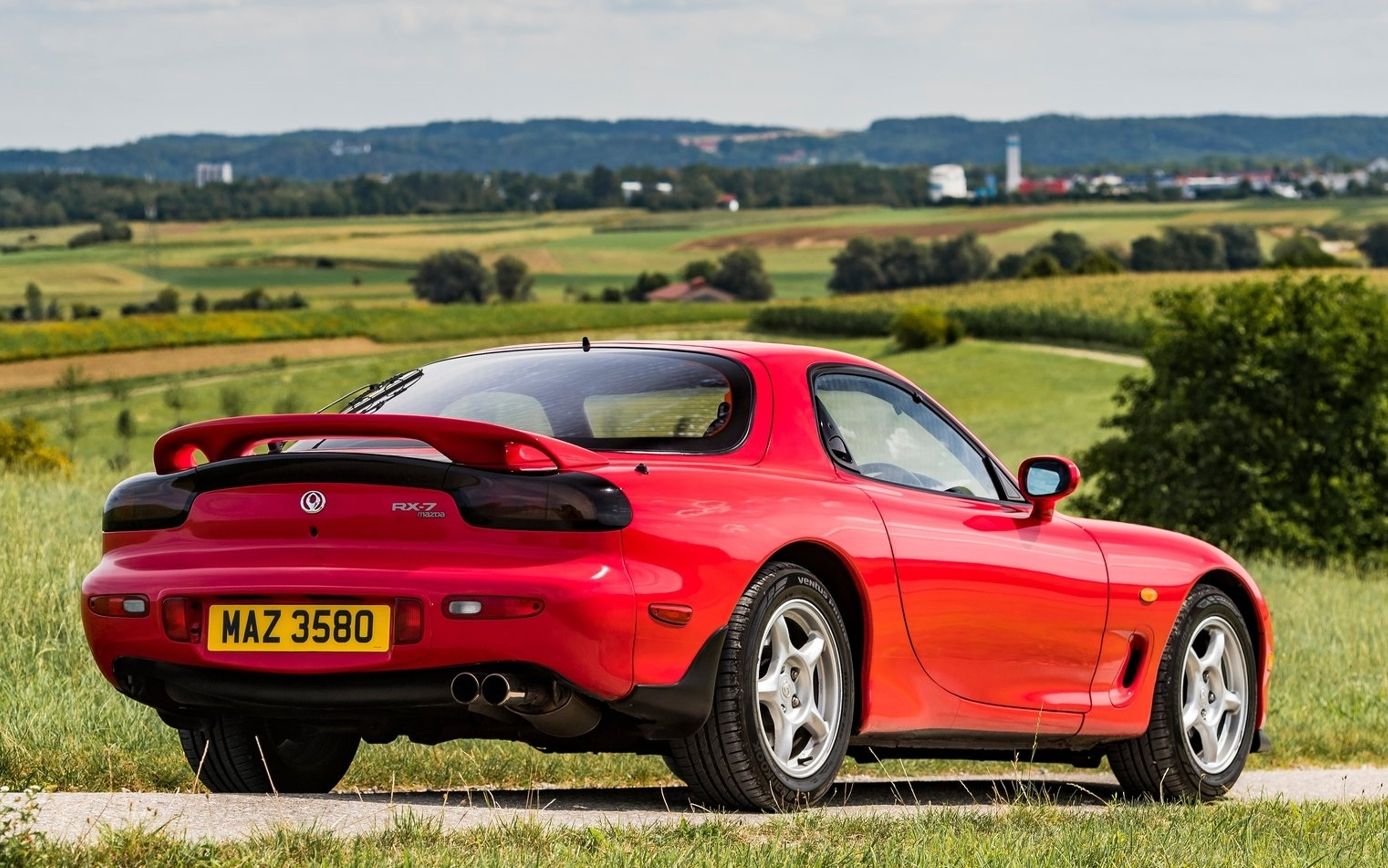
| Mazda RX-7 Base | $31,000 (est) |
| Mazda RX-7 Touring | $35,000 (est) |
The FD Mazda RX-7 was only produced for 3 years between 1992 and 1995. Cars sold Stateside were 1993-1995 model years. When new, a base model FD sold for $31,000 MSRP. Now, these Japanese sports coupes sell for more than they did when new. The average selling price is $38,906 over the past five years. Why? There are very few examples available, especially in completely stock form.
Let's provide a comparison. Mazda sold over 330,000 first-generation FB RX-7s. 161,000 second-generation FC RX-7s. The final and best one? 13,879 examples in the U.S. What gives? That is only four percent compared to the production total of FB generation.
Now 30 years later, the effects of those low production numbers are being multiplied. In the final model year of 1995, only 500 FDs sold Stateside. At that point, Mazda said, "it's over, you guys don't deserve this anymore." We allowed it to happen and here we are dealing with the repercussions: 30 years later, still no successor.
A surprising fact is also that the rarest FD outside the limited R1/R2 models is the automatic variant. Only about 500 automatic FDs exist. Certain paint and trim options are within single-digit sales across the entire production. This makes finding your dream stock FD RX-7 worse than a needle in a haystack. At least with the needle you know it exists. With the FD on the other hand, there is no guarantee.
Another consideration is the age of the FD RX-7. As we mentioned, this is the last car sold in the U.S. with a rotary. The 13B can be a very reliable engine if maintained in a religious fashion. However, due to its inherent design, it must burn oil. Improper maintenance or oil types can destroy apex seals, requiring an engine rebuild.
A compression test is a necessity for any prospective owner. If you are about to drop $30,000+ on a 30-year-old coupe, you need this as insurance. Many vacuum lines, hoses, harnesses, and rubber parts can be brittle due to age. Many seek an unmolested example. Yet, some modifications promote the longevity of this sports coupe.
These are details like a lower threshold fan switch and downpipe to reduce engine temps. The plastic coolant overflow tank is brittle and weak. It is common to have it replaced with a metal unit along with an upgraded aluminum radiator.
The FD RX-7 provides an experience, unlike any modern offering. It is a first and last in many ways. Mazda has hinted they may be a revival of the rotary engine in the future. But will the packaging carry forward the handsome looks of the FD? Impossible.
The FD is a vehicle stuck within a time capsule it can't escape. While we are happy to know it still exists, we're also sad at the same time since it is so rare. Few cars have such a simple elegance executed in such a unique and effortless fashion. The Mazda RX-7 FD remains a JDM legend and a car that any driving enthusiast should dream of one day owning.

